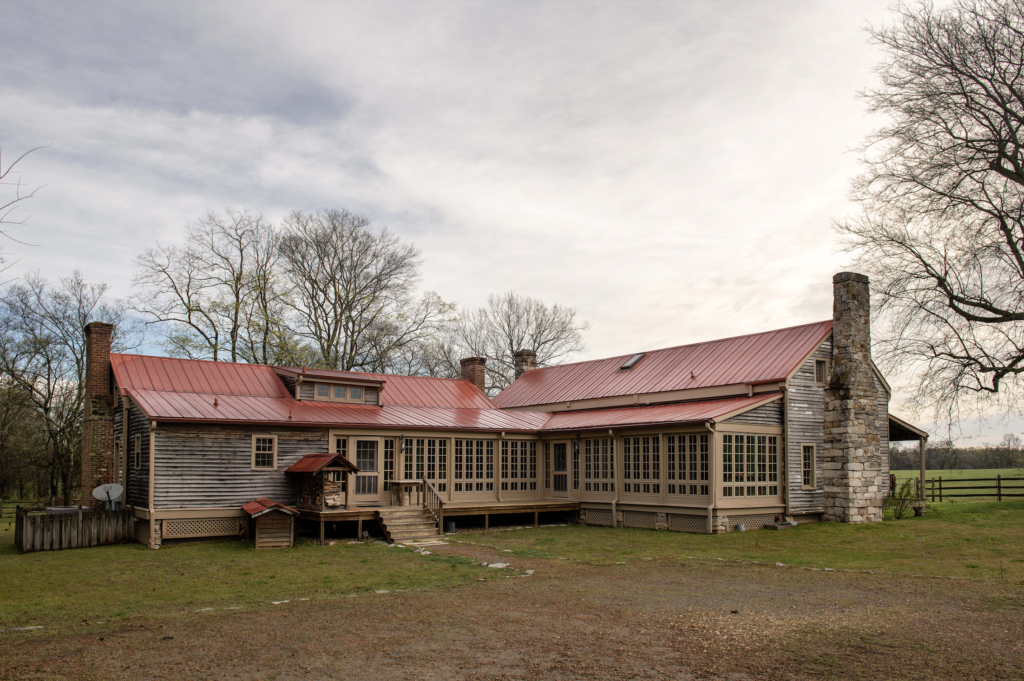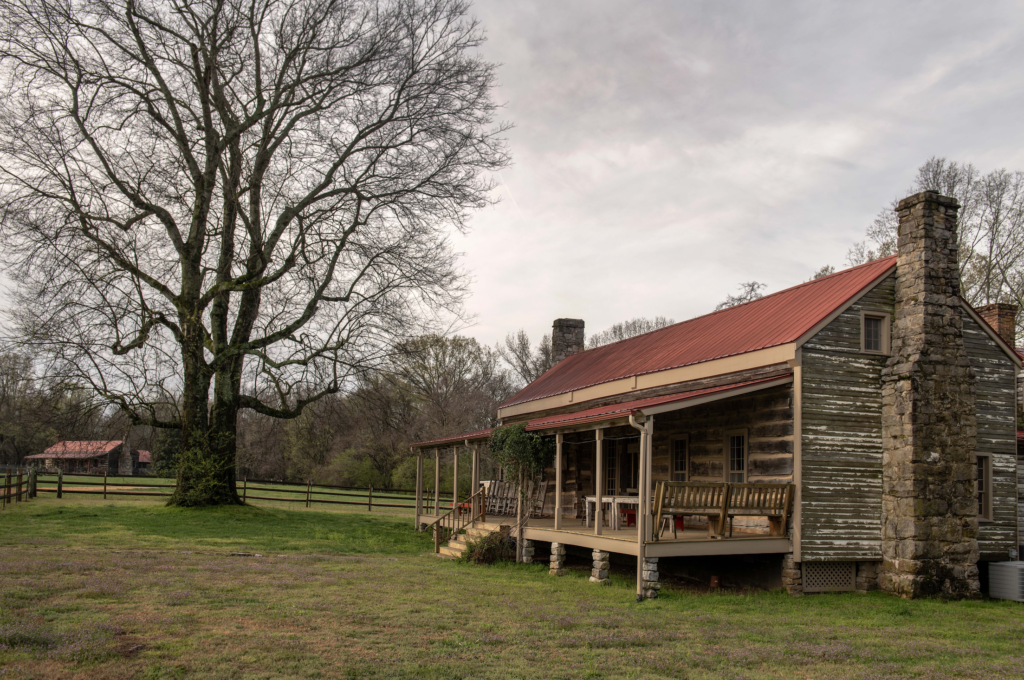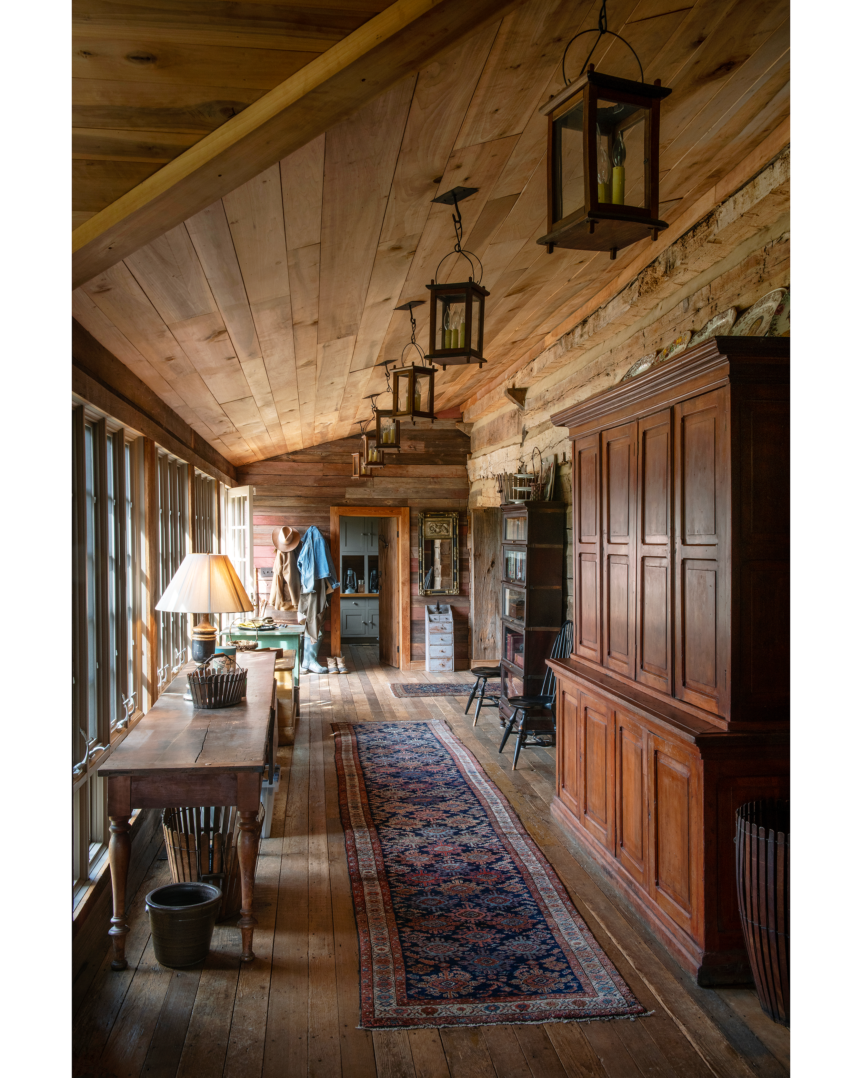On an Alabama farm, a lover of vernacular architecture rescues and reimagines historic log cabins—preserving place, memory, and a powerful sense of home.
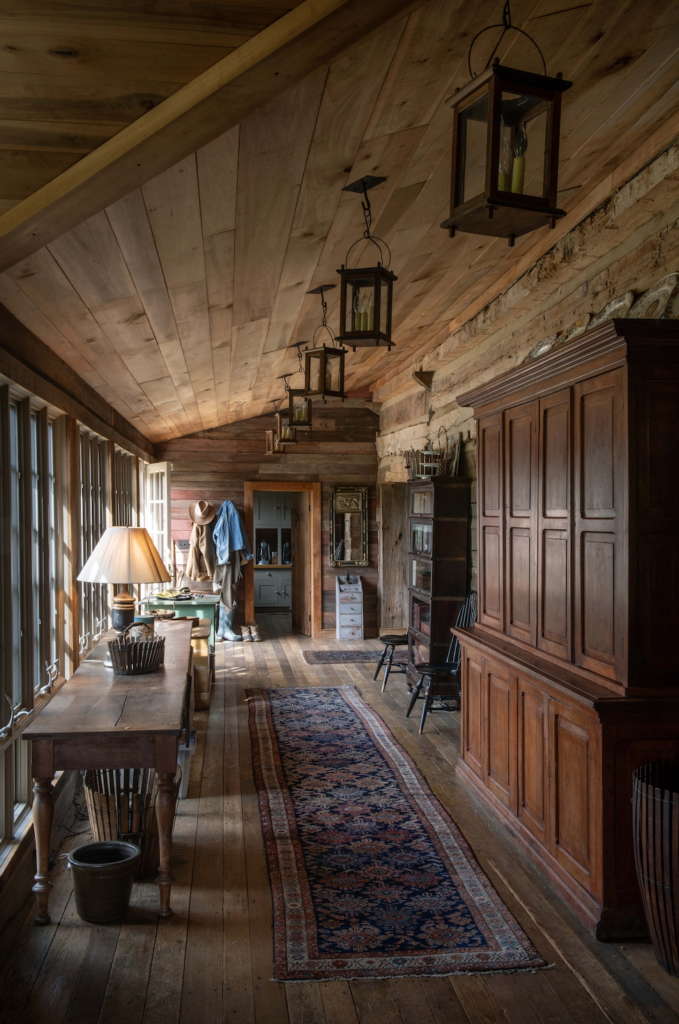
Dianne O’Neal had been driving around the Alabama countryside for dozens of hours when she came upon the cabin. It was located about a mile off the road, over rugged fields. The 1860s log shelter was being used as a hay barn, and it was the second such cabin O’Neal and her companions had scouted. “This was forty years ago, and there were dozens of log cabins abandoned in the landscape,” she explains. “The first one we found, the owner wasn’t interested in selling.
But this one, they let us buy it for a few thousand dollars.” It would need to be moved, updated, and upgraded, but otherwise the simple structure was perfect. “I’m very interested in vernacular architecture. It’s what speaks to me,” she says. For O’Neal, a cabin can’t be moved from one state to another and still be “real.” She adds, “I think it has to be from the place itself.” O’Neal wasn’t always so passionate about preserving southern architectural history. “I’m a Northeasterner,” she dryly notes. When she first visited her husband’s thousand-acre family farm in Florence, Alabama, it struck her as “the back of beyond.” But something shifted once she was pregnant with their son: “I had this change of heart. Suddenly, I was very interested in family history, because I was a part of it.”
O’Neal bought that first 1860s cabin, and then a second from about 1820, and then, when the first home-owner they visited changed her mind, O’Neal purchased that one too. (This third cabin would eventually become the home of her sister-in-law, Nancy, and is seen here, too.) In 1998 the process of moving the primary two cabins across the fields, down the road, and onto the family farm began. “We moved them on trailers, intact. That’s something you can only do if you find them nearby. When you take them apart, I don’t feel that they’re ever the same, somehow,” she says. “We spent a lot of time driving around the farm and looking for a ‘house-place,’ as they call it in the South.
There were a lot of spots we could have chosen, but this one felt right.”
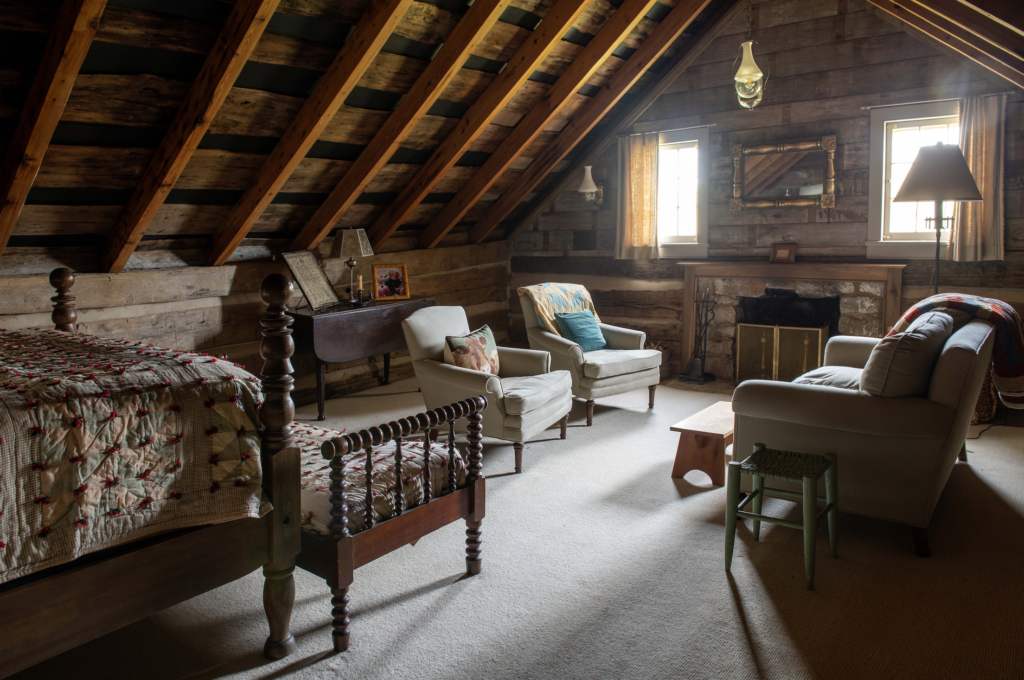
The property would comprise a blend of old and new: O’Neal hired architect Harvey Jones to transform her cabins into an L-shaped house with a pitched roofline and gracious porches. She found builders who specialized in historic southern homes to rejigger the interiors. Of course, she didn’t want them messing with the rooms (or “pens,” as they’re called) very much, though she did plan to enclose the open breezeways (called “dogtrots”). Because, “in Alabama, you just really need air conditioning.”
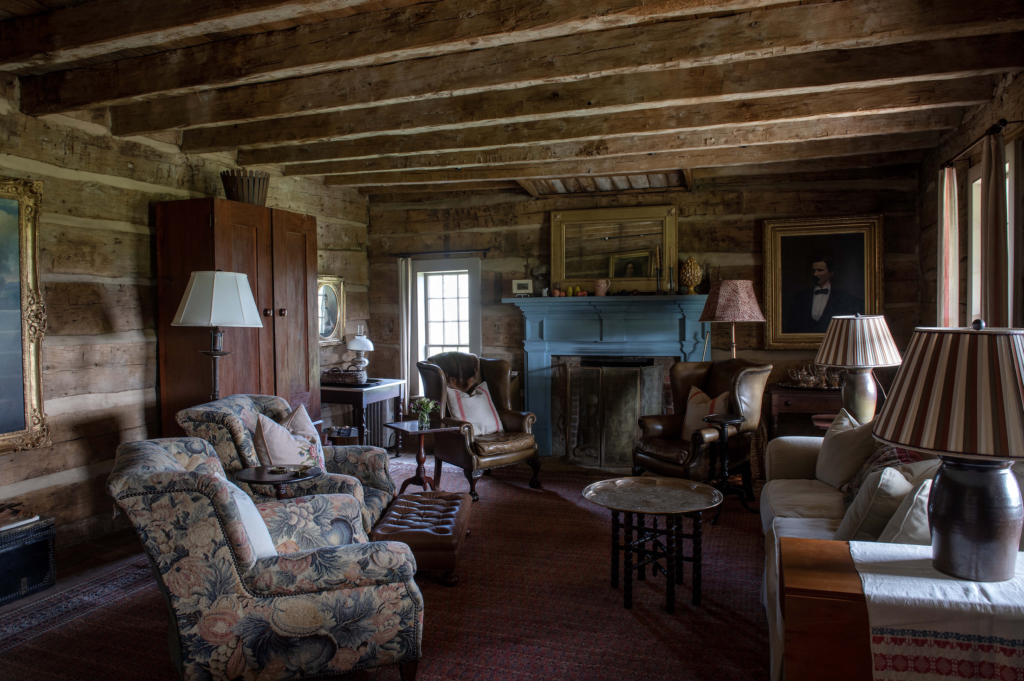
Construction took around eighteen months, and during this time, O’Neal was overseeing everything from afar, as she was living with her husband and son in Australia. In fact, O’Neal has never lived in the Florence log house full-time, though she tries to spend around half the year on the property. It has been thoroughly updated for modern living, with the 1860s cabin serving as the living room, kitchen, and homeowners’ suite, and the 1820s cabin housing the study, her son’s room, a spare bedroom, and the TV room. The section at the right, which joins the two halves of the home was transformed into a sunny dining area. O’Neal also added a screened-in porch—one of the few incongruous elements on an otherwise historically sensitive exterior. But, as with the air conditioning, she felt that certain amenities were worth it.
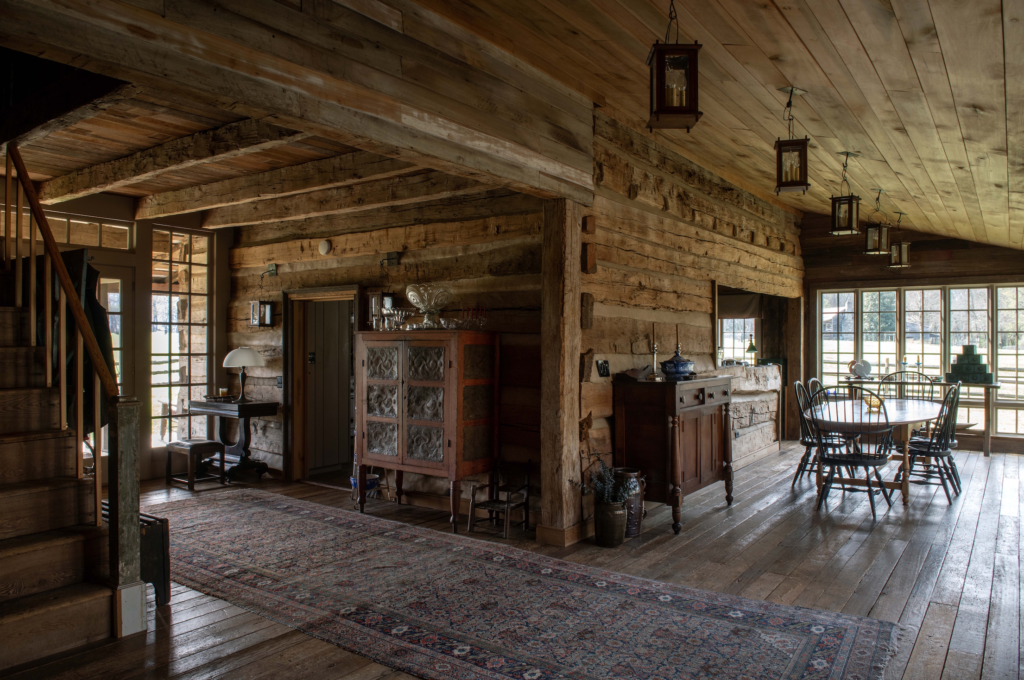
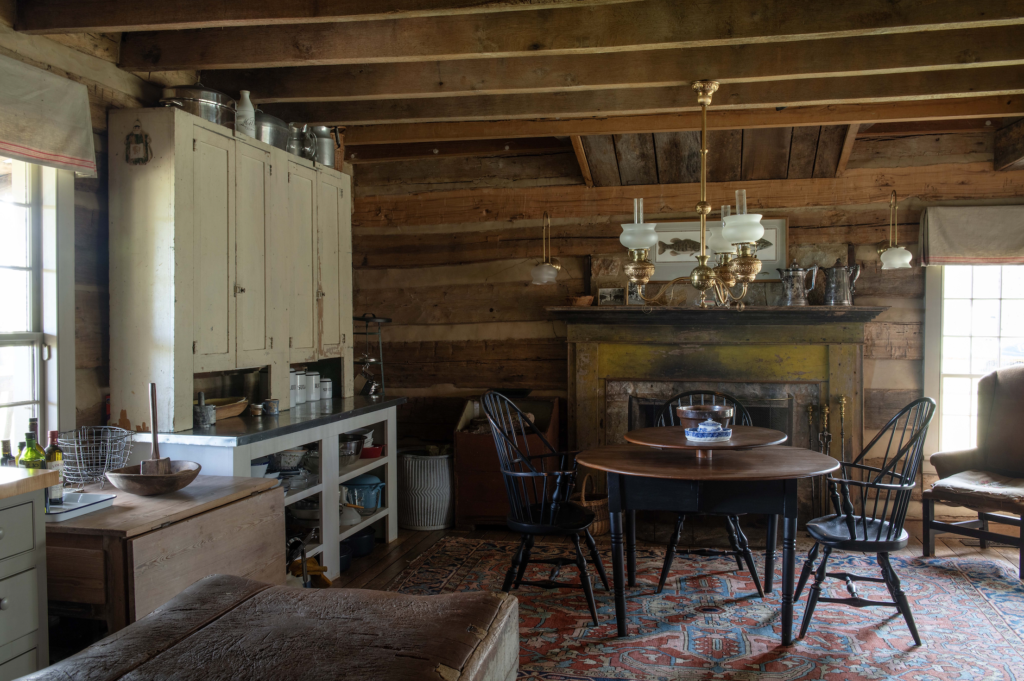
Inside, O’Neal turned her sharp eye to sourcing antiques that would not only fit with the cabins’ backstories, but also with the family’s local lineage. “In the living room is probably where I feel the influence of history most strongly,” she says. “The people we bought the cabin from had taken out one of the mantels and put it in their own house. Obviously, I couldn’t very well say, ‘Hey, give me that mantel.’ But I did ask if we could copy it.” She chose to paint the reproduction sky blue, a color that would certainly have been in use in the 1860s, and which echoes in small moments throughout the house.
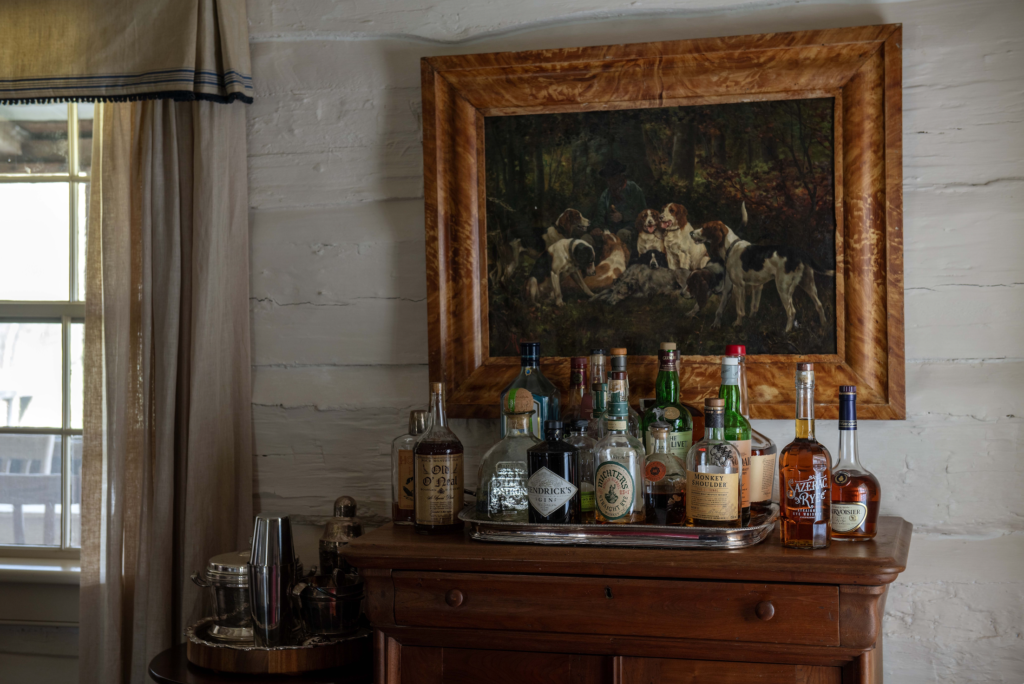
The living room is further decorated with a series of portraits that O’Neal has tracked down and purchased, all of which feature faces she can identify by name. “I’m not a big fan of portraits if you don’t know who they are. But if you do, I think it’s very special,” she says. One of the portraits is a full-length, nearly life-sized painting of Mary Coffee, wife to Edward O’Neal II. “She was the woman through whom the farm came to us,” O’Neal explains. “It’s so cool. She’s dressed in a frilly white dress and holding a little birdcage with a bird in it.
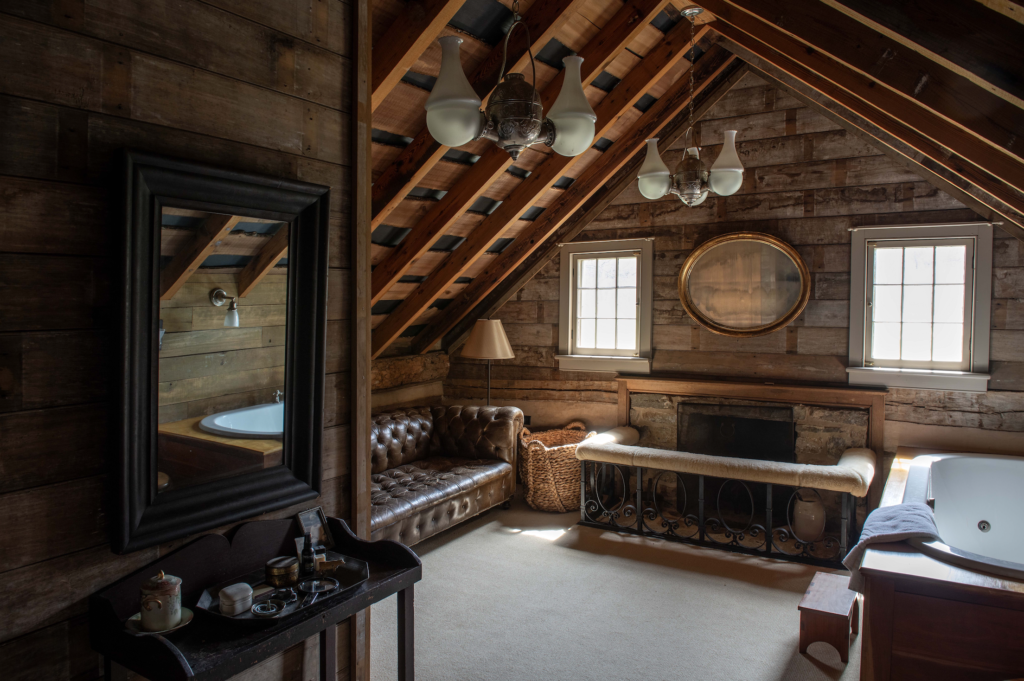
It’s a fabulous portrait, and I couldn’t be luckier to have it in the house.” Hanging nearby are portraits of four of the Edward O’Neals, from the first, who served as the twenty-sixth governor of Alabama, to the fourth, her late husband’s father. Only one artwork in the room diverges from the theme, and that is a small interior done by Nancy O’Neal of Mary Coffee’s dining room at Thimbleton, her 1800s Italianate home in downtown Florence.
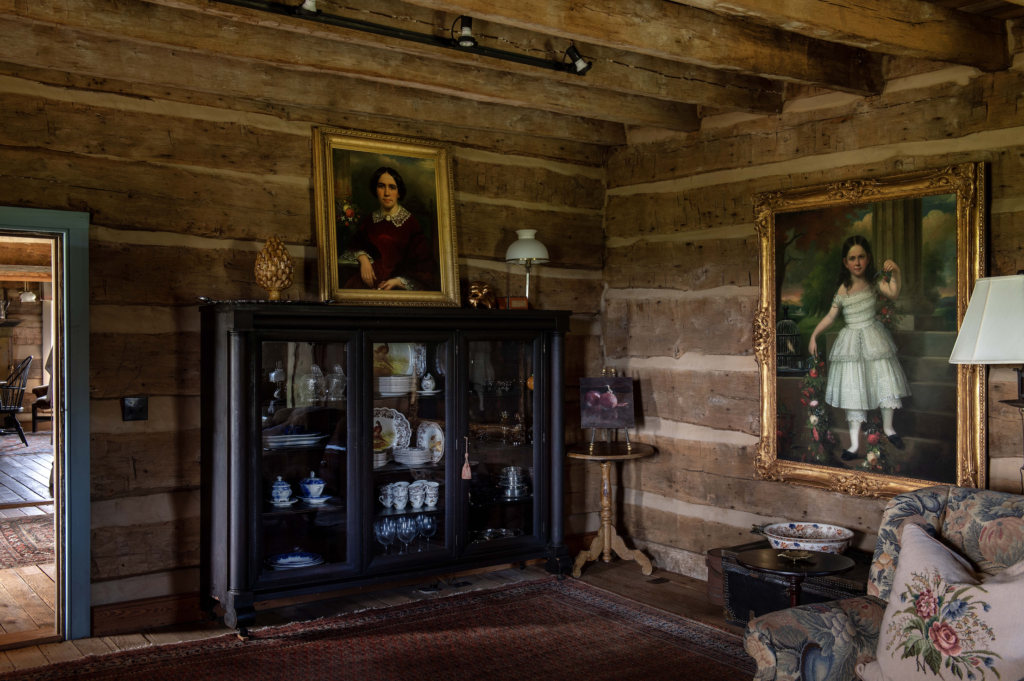
“Poor woman,” O’Neal says, “her husband, the love of her life, died when her son was very young.” After his death, she remarried and went to live at her new husband’s home, Thimbleton, which eventually passed to her son, Edward O’Neal III. The work, O’Neal points out, has so much resonance for their family. “We have many pieces from Thimbleton in the house,” she adds, “There’s a bed on the second floor of the 1820s house, and a settee in that room as well. There are also some odd tables here and there that were from Thimbleton.”
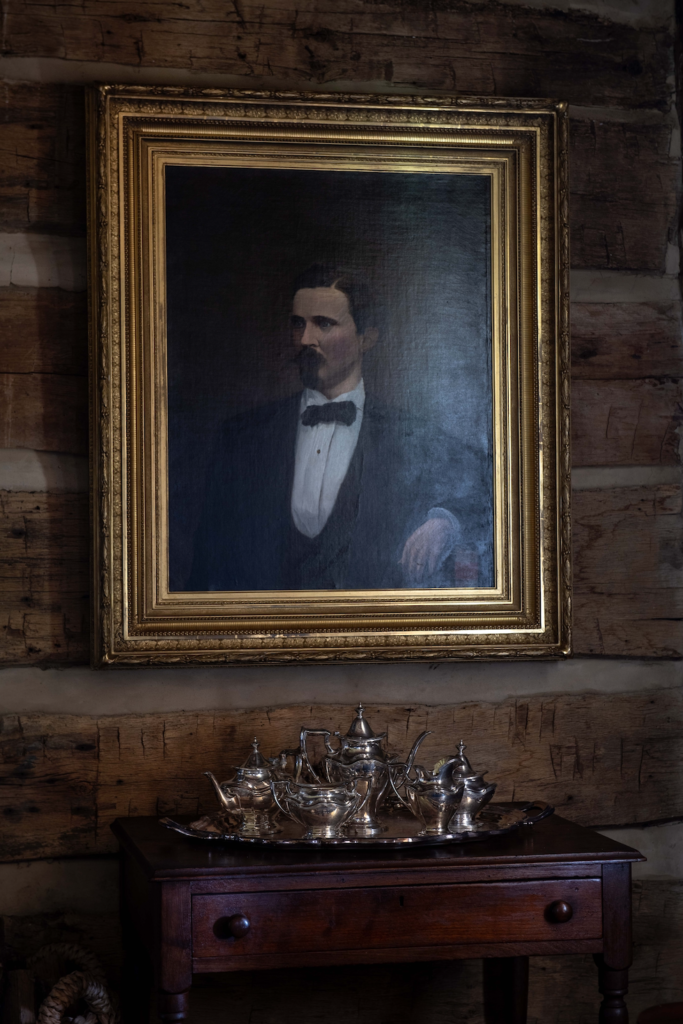
Although much of the furniture has been handed down as heirlooms, some objects were purchased for the house, including a majestic Gee’s Bend quilt that adorns O’Neal’s bedroom upstairs. It was important to O’Neal that the antiques and art objects all come from Alabama, or in a pinch, from Tennessee. “Very often, a dealer who has a lot of Alabama furniture also has a lot of Tennessee furniture,” she says. “And it felt alright to buy those things because John Coffee [1772 –1833, Mary’s grandfather] came to Alabama from Tennessee.”
(Rather whimsically, O’Neal admits to “making up little stories” about how Coffee could have brought pieces with him from Tennessee: “I like to think his furniture probably looked like what I have.”) However, when it comes to seating, O’Neal has brought in some contemporary items. “Usually, what I do is I combine antiques with comfortable furniture,” she says. “I don’t believe in sitting on uncomfortable chairs, so most of our chairs and upholstered pieces are modern.” These pieces sit alongside antique splint-seat chairs and stools, a traditional southern lazy-susan table, and vintage armoires sourced from small-town antiques malls. (While many of the dealers she’s worked with over the years have since gone out of business, O’Neal recommends Black Sheep Antiques in Harpersville and Brittany House Antiques in Oak Hill for those seeking similar items.)
The overall effect is one of purposeful, occasionally rugged yet still elegant, ease. Although they no longer keep animals themselves, both O’Neal and her sister-in-law, Nancy, are keeping the spirit of the family farm alive in their respective cabins. From the family portraits to the solid wood, period-appropriate furniture, creating these homes took an extraordinary amount of research and dedication to detail. They not only reflect the sensibilities of their current owners, but also the lives of generations of significant Alabamians. “I find it very meaningful,” O’Neal says. “I once read that early settlers who lived in log cabins like these were very proud of them and furnished them in a relatively high style with elegant objects, including silver. I have tried to do that, too. It felt real and true.”
